5. Legend of the Drunken Master
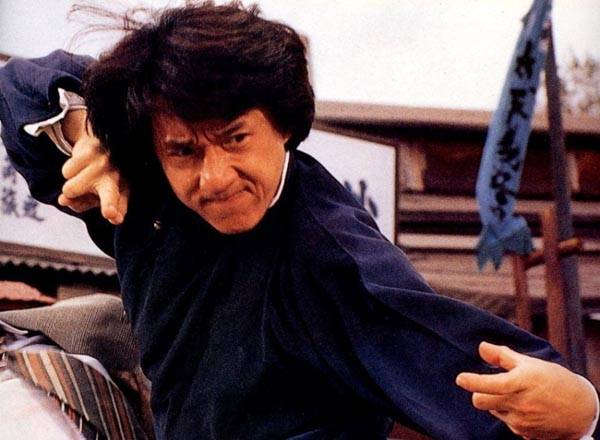
The original Drunken Master is regarded by many as the film in which Jackie Chan first began to home his unique blend of action and comedy. So when he returned for the sequel not only was he able to improve that style, he managed to craft what stands as quite possible his undisputed masterpiece, Legend of the Drunken Master.
Jackie reprises what may be his most likable and beloved character ever as the dutiful son of a teacher who brings shame upon his family by participating in the art of ‘drunken boxing’. The story that follows contains some of the most intricate, beautifully choreographed, stunningly executed fight sequences ever put to film.
There’s such a fluidity to every fight, such momentum and impact that the comedy of it is often forgotten but just as often as it is awe inspiring the fights are also hilariously entertaining thanks to Chan’s unique brand of physical comedy.
It’s a showcase for so many of the most iconic aspects of Jackie Chan such as his signature style of fighting that somehow makes what any other actor/martial artist would turn into a serious and overly brutal farce into a joyous display of comedic and electrifying fighting, as well as his great use of props and spectacular set pieces.
Furthermore there is such a brilliant physicality to all of this action which of course is purely down to the fact that all of the stunts are actually happening. When Jackie Chan falls into a pit of burning coals in the film’s amazing fire breathing finale, that’s really him falling into real hot coals. In fact Chan did the stunt three times before he got the take he wanted, badly burning himself on that third attempt.
That final sequence in question is a 20 minute long showdown between Jackie and Ken Lo and displays some of the finest sustained choreography in film history. It was devised and directed by Jackie himself after he fired another legendary choreographer for being too traditional and it’s not hard to be appreciative of that. As Roger Ebert would later write “It may not be possible to film a better fight scene”.
4. The Dark Knight
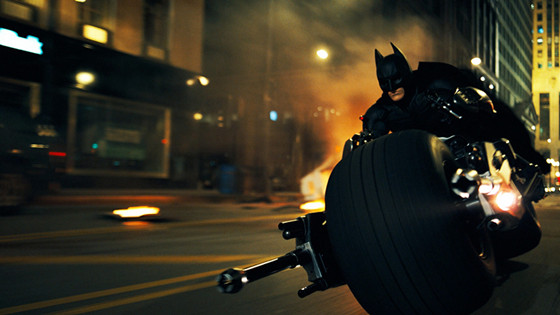
Christopher Nolan’s follow up to his 2006 Batman reboot, Batman Begins, is frequently regarded as one of the best, if not the best, comic book movie ever made. It almost transcended the genre to become a modern action masterpiece that all these years later is still looked upon as an amazing achievement in modern filmmaking.
In the film Bruce Wayne (Christian Bale) continues to wage his war on crime under the identity of Batman and is aided by district attorney Harvey Dent (Aaron Eckhart) and Commissioner Jim Gordon (Gary Oldman). But he now faces his deadliest and most morally challenging adversary yet in the form of the Joker (Heath Ledger) an anarchic madman who seeks to undermine not only the security of Gotham city, but destroy the will of its sprite to create chaos.
The Dark Knight is not simply another superhero film, it goes beyond the limitations of the genre to become a compelling crime drama, a thrilling tragedy and a haunting portrait of good and evil. The writing, performances and direction all serve as a reminder of just how great a blockbuster action film can be and serve to inspire numerous filmmakers working today.
By crafting characters that display a range of emotions the film becomes one of surprising depth and complexity. It’s themes of order against chaos, corruption of societies and individuals all serve to elevate The Dark Knight to greatness. It churns out so many good performances such as Oldman’s brilliant resident good guy, Eckhart’s tragic fall from grace, Bale’s tormented champion of order.
But without a doubt the stand out is Ledger, whose tragic death soon after the films completion made his performance all the more unsettling. His manic and electrifying performance stands as one of the best in recent cinema history (dare I say of all time?). Nolan’s direction is also magnificent, with each action scene having a genuine weight but also retaining a sense of spectacle as well as the pitch perfect tone and excellent style. The film also manages to feel so tightly constructed yet epic in scope.
3. Mad Max: Fury Road
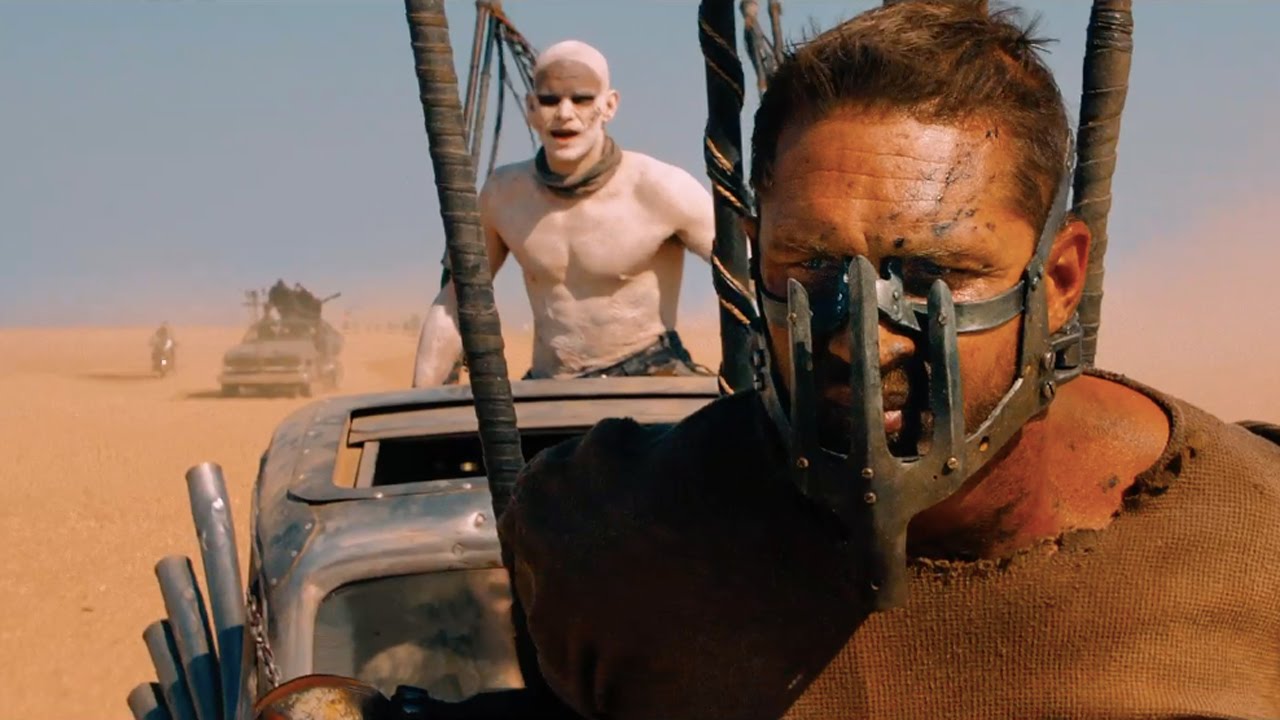
It may be easy to dismiss this selection as just a case of favouritism towards more modern action films that are fresher within our memories. Though there are many passionate fans of The Road Warrior it’s Fury Road that stands as a spectacle unlike any other.
It laughs in the face of other modern action movies that are permeated with CGI, fleshing out a world and creating such monumentally amazing action through real, practical effects, something that until Fury Road’s release was thought to be almost lost in today’s films.
Far from what the film’s detractors will revert to as their first reason to undermine the film, it does in fact have a plot. Having been captured by a local warlord Max Rockatansky (Tom Hardy) barely escapes with his life. But from there he falls into the company of Furiosa (Charlize Theron) and her group of refugees as they are making their way across the desert to a safe haven, hotly pursued by the warlord Immortan Joe.
Just because Mad Max: Fury Road doesn’t have its plot and character development explicitly explained through expositional dialogue doesn’t mean they are non-existent. It’s an action spectacle of redemption and revolution that from the very first shot feels as if it has been crafted by a veteran filmmaker still at the top of his game.
George Miller coveys the emotions subtly through pure visual storytelling, from Max’s gradual reconnection with his humanity by working with others to Furiosa’s desire for redemption through the saving of the innocent.
For a film that is essentially one giant chase Fury Road is surprisingly thematic. It’s hero is not a gung-ho action junkie but a reluctant man simply trying to survive, the main narrative focus is on a strong and determined female character that looks at the insanity of the leadership around her and decides to take action, doing what is necessary to harbour a new generation of survivors. In many ways it’s the adrenaline fuelled response to the macho nonsense that too often defines the genre.
Miller turns everything up to eleven but in the best possible way. You’re hardly left with a moment to think as the massive chase sequences across the scorched landscape pulsate with such vibrancy and energy. Every aspect of the film is so impeccably crafted from the production design, the editing, sound design, pacing and music score that it creates an utterly unique experience that can’t quite be matched anywhere else.
2. Aliens
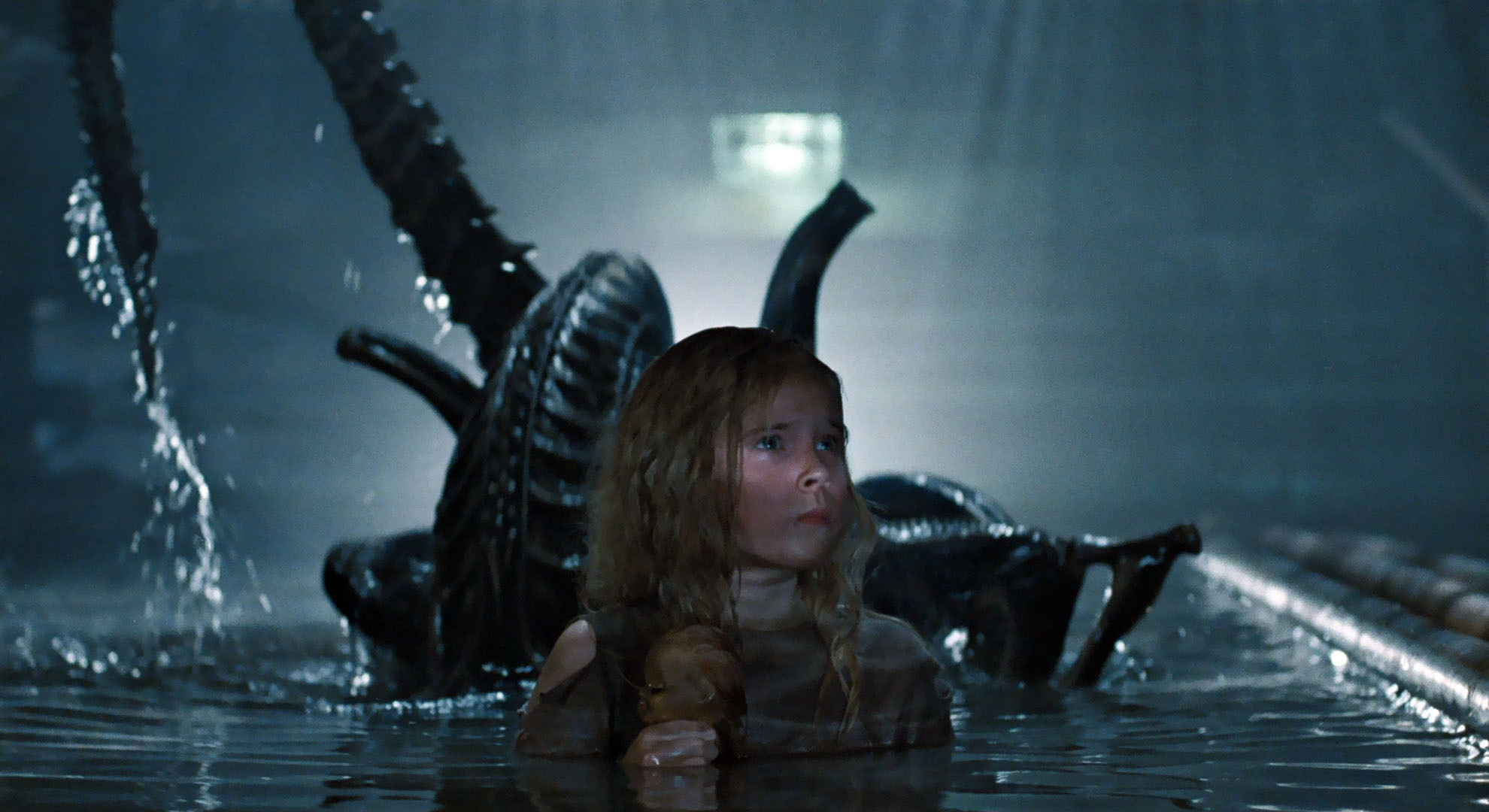
Whereas Ridley Scott’s original Alien was a claustrophobic horror masterpiece, James Cameron’s successor could very well be described as the perfect sequel. It manages to establish an unquestionable connection to the original and expands upon all of the ideas and themes. At the same time however is succeeds in distinguishing itself from the original in a way that few sequels have.
The story involves Ripley (Sigourney Weaver) being recovered from cryogenic stasis 57 years after her first alien encounter. Now starting a new life in a new time she is recruited as a consultant to accompany a unit of space marines as they investigate an apparent attack on a human colony on the planet where Ripley and her crew discovered the creature. When they arrive they discover a deadlier threat than they ever could have imagined.
In most cases it’s assumed that more can often result in less, but that certainly doesn’t apply to Aliens. Instead of one ruthless killing machine we as an audience are treated to an army of them, the stakes are ramped up, the costs are higher and the film is all the better for it.
The same aesthetics from Alien are adapted into a warzone here rather than a haunted house and they act as the stage for what many have interpreted as an astonishing political metaphor as legions of overconfident troops descend into unknown territory to face a threat they never fully understand, an allegory for Vietnam.
The film delivers a roller coaster ride of violence, it’s almost unbearably tense while being simultaneously energetic. Cameron would ramp up the tension to unprecedented levels before releasing it in a glorious final execution. From start to finish it acts as a superbly crafted and utterly horrifying thriller, one that permanently surrounds you with an almost inescapable sense of danger the likes of which haven’t really been witnessed before or since.
In the role of Ripley, Sigourney Weaver cemented her position as one of the most iconic characters in the history of cinema. She stands as perhaps the greatest female lead of all time, one that is complex and motivated to protect those around her. Her maternal instincts drive her throughout the film as she tries to protect the young human child Newt and it all comes ahead in one of the greatest showdowns in cinema history when she squares off against the Alien Queen. It’s stunning to behold.
1. Terminator 2: Judgement Day
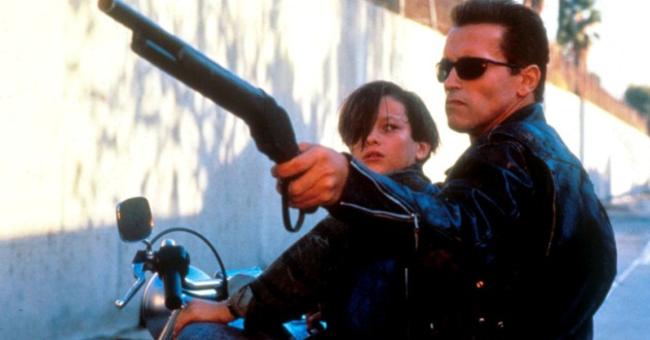
Both first and second positions go to James Cameron, with good reason. When it was first released in 1991 Terminator 2 was the most expensive movie ever made with a budget estimated at around $100 million. But not only did it turn a very hefty profit, it established itself as one of the greatest action movies to ever grace a cinema screen.
Everyone involved knew that the second outing had to be bigger and better in every way. Cameron had originally conceptualised this plot before that of the first Terminator, with his original idea involving two robots that travel back in time to battle for the fate of a future resistance leader, he even provided a detailed description of how one machine would be composed of liquid metal.
But a lack of budget and adequate technology forced him to change his concept. Ultimately though it proved beneficial as the sequel was able to fulfil this original concept to its fullest potential.
Nearly 10 years have passed since Sarah Connor (Linda Hamilton) was targeted for termination by a cyborg from the future. Now her son, John (Edward Furlong), the future leader of the resistance, is the target for a newer, more deadly terminator (Robert Patrick). Once again, the resistance has managed to send a protector (Arnold Schwarzenegger) back to attempt to save John and his mother Sarah.
Once again Cameron applied his ideology of connecting with the themes, plot and characters of the original movie but also expanding its mythology and ultimately differentiates itself.
Arnold’s turn as the good guy may be one of the most brilliant moves in any action movie ever, the once frightening and menacing killer suddenly becomes a potent symbol of hope but at the same time loses none of its moral ambiguity. Linda Hamilton returns to reinvent the character of Sarah Conor from vulnerable target to a determined and damaged soldier.
The whole structure of the film is set up to convey a sense of visceral energy and constant momentum with each scene setting up the next one making it virtually impossible to stop watching.
Then there are the amazing special effects that were mystifying in 1991 and remain so today. But amid all of the epic action there’s an emotional beauty to the film as it comments of the value of human life and its ability to endure. A masterpiece that doesn’t just stand as the greatest action sequel but one of the greatest action movies of all time.
Author Bio: Joshua Price considers himself more of a fan that happens to write near insane ramblings on movies and directors like Scorsese, Spielberg, Bergman, Kubrick and Lumet rather than an actual critic and other insane ramblings can be found criticalfilmsuk.blogspot.co.uk.